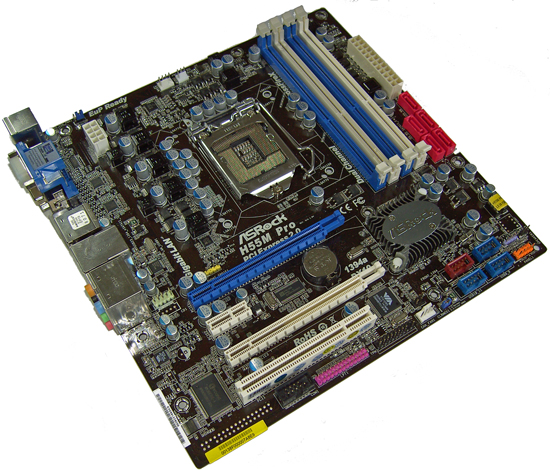Choosing the Best H55/H57 Motherboard - Part 1
by Rajinder Gill on January 31, 2010 11:30 PM EST- Posted in
- Motherboards
Final Words
This concludes part one of our coverage today. We've still got plenty of testing to do over the next few weeks, as there are a few areas we'd like to explore on some of these boards - namely Lynnfield overclocking, which we have not had enough time to perform on the H55/H57 chipsets just yet. The boards all POST when a Lynnfield processor CPU is inserted; we need to find out how well the cheaper boards handle a quad-core HT enabled CPU for overclocking, and if it's worth saving some money over entry to midrange P55 boards by using H55/H57 for the same task.
We're also looking at adding in some USB 3.0 testing in the near future; it's a matter of getting the right equipment in the lab to test these features in a meaningful way and to make sure that the boards work as they should.
Testing of the next four boards is already underway, and we're aiming to have something up in a couple of weeks. By then, we should be able to draw a firm conclusion of which board delivers the best functionality, performance, and overall feature set. The four boards we'll be looking at in the labs over the next two weeks are the Gigabyte H57M-USB3 and H55M-USB3, the BIOSTAR TH55HD, and finally the ECS H55H-M. Stay tuned….
Assuming you can get past Intel's kicker of locked single card GPU support on these boards and you really must buy now, then based upon our experience with the four boards we've looked at today you've got two reasonable choices. If your budget will stretch far enough, go for the ASUS P7H55D-M EVO. It's the smooth-operator of the bunch and should give you a trouble free time if you plan on any overclocking.
If you're after cheap and cheerful, the ASRock H55M-Pro will get the job done. The remaining quirks are a matter of overclocking preferences and overclocking functionality more than anything else. The current release BIOS has not given us any issues in normal usage scenarios at all so far and seems to make for a very stable PC build.

In closing, one thing we have noticed in our Clarkdale testing is that the CPUs overclock memory better when placed in some of the mid-high end P55 motherboards. It's not a huge gap but it becomes readily apparent at higher memory frequencies (over DDR3-1800MHz). We're not sure if this is due to vendors not having a full grip on the H55/H57 chipsets yet, or if it's down to design compromises on the H55/H57 motherboards we've tested - it's probably safe to say it's a bit of both. It'll be interesting to see how things develop in this regard over the coming weeks. This is another reason why it might be wise to wait a while and see how things pan out, depending on what you're looking for from the Clarkdale platform.










56 Comments
View All Comments
randercol - Friday, March 26, 2010 - link
stop smoking and drinking guys and girls.its not wrote in any bible that our next generation will in future will take smoking and drinking.its our bad manners and we grow it very fast when we were small then we were alive without that things so why should now?http://www.goarticles.com/cgi-bin/showa.cgi?C=2236...">http://www.goarticles.com/cgi-bin/showa.cgi?C=2236...
alimaamoser - Tuesday, March 16, 2010 - link
i think 55 is best anand....http://www.articlesbase.com/health-articles/dentas...">http://www.articlesbase.com/health-arti...-does-de...
jed22281 - Friday, March 19, 2010 - link
looks like this users acct needs to be deleted for spammingrandercol - Monday, March 22, 2010 - link
i think 53 is best for you and it is the best for you .http://www.articlesbase.com/wellness-articles/ther...">http://www.articlesbase.com/wellness-ar...eanse-re...
alimaamoser - Tuesday, March 16, 2010 - link
i think 55 is best.......http://www.articlesbase.com/health-articles/dentas...">http://www.articlesbase.com/health-arti...-does-de...
dentasmile md
Nomale - Thursday, February 18, 2010 - link
Is there any difference with h57 and p55 regarding xeon support? I don't think it's supported officially since it's aimed at the server market, but since it's based on lynnfield there seem to be no problem with p55 at least.Mrkock - Wednesday, February 10, 2010 - link
The first time I read this article, I got the impression that the H55/H57 boards don't support a Pci16x Video card.The second time I read this article, I was pretty sure about it.
So is that true, that the H55/H57 can't support additional Video cards (like a Nvidia or ATI graphics card)?
Rajinder Gill - Thursday, February 11, 2010 - link
Hi,H55/H57 will support a single GPU only for Clarkdale processors (so any 8x or 16x PCI/e GPU is fine).
If you want to run dual GPU configurations you have to use a Lynnfield series CPU.
regards
Raja
jtsh0ck3r - Friday, February 5, 2010 - link
Raja,For someone looking to upgrade an old system with an older PS with just the 4-pin 12V ATX connector, should they upgrade the PS as well?
Rajinder Gill - Friday, February 5, 2010 - link
Hi,You should be fine on 4 pin with Clarkdale, unless you plan on very heavy overclocking. Load power draw is under 100 watts in most scenarios when you run these CPU's at stock (around 8~10 amps from the 12V connector).
Hope the helps
Raja